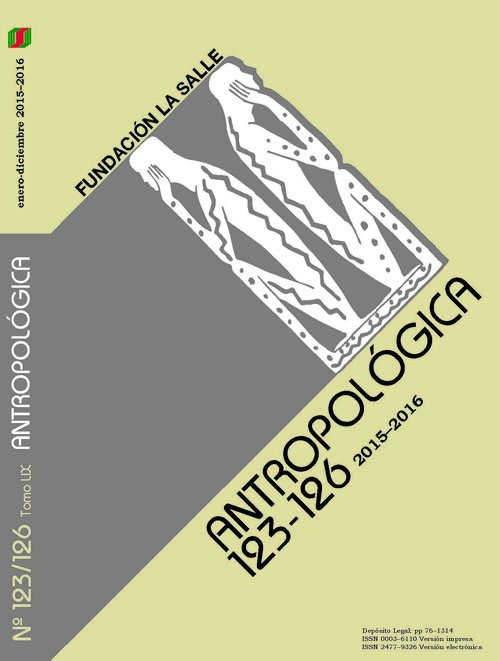Procesamiento, uso, consumo y comercialización del Hayo (Erythroxilum cumanense Kunth) entre los Caribe prehispánicos de la Costa de Venezuela
Palabras clave:
Caribe de la costa, Guaiquerí, Erythroxylum cumanense, coca, registros históricos, etnobotánica, importancia socioeconómica, Venezuela, Coastal Caribs, historical records, ethnobotany, socioeconomic importanceResumen
Durante la primera década del siglo actual, tres investigaciones independientes mostraron que el hayo (Erythroxylum cumanense Kunth.) produce el alcaloide tropano identificado como cocaína. A su vez, los registros botánicos revelaron que la distribución geográfica de esta especie está limitada a los territorios xerófilos costeros del norte de Suramérica desde la Guyana Francesa hasta el noreste de Colombia, las islas venezolanas y las Antillas menores, un territorio colonizado en su mayor parte por los Caribe de la Costa, seguido en el oeste por los Caquetío, Ayomán y Wayúu. Entre 1499 y las primeras décadas de siglo XVI, las crónicas señalan que estos amerindios, los Guaiquerí de la región de Cumaná en particular, cultivaban, procesaban, consumían y comercializaban las hojas de E. cumanense junto con conchas de gasterópodos pulverizadas. También mencionan el efecto de masticar este producto similar al descrito años más tarde entre las culturas amerindias de los Andes y la cuenca amazónica noroccidental quienes aún hoy cultivan y mastican las hojas de E. coca var. coca, E. coca var. ipadu, E. novogranatense var. novogranatense y/o E. novogranatense var. truxillense. Esta evidencia expande la geografía de la costumbre de “masticar coca” para incluir a las poblaciones indígenas de la costa norte del continente.
The processing, use, consumption and commercialization of Hayo (Erythroxilum cumanense Kunth) among the prehispanic Caribs of coastal Venezuela
Abstract. During the first decade of this century, three independent investigations showed that hayo, (Erythroxylum cumanense Kunth.), produces the tropane alkaloid identified as cocaine. At the same time, the botanical records revealed that the geographic distribution of this species is limited to xerophytic zones of northern South America from French Guyana to northeastern Colombia, the Venezuelan islands and the Lesser Antilles; a territory colonized in greater part by the Costal Caribs followed by the Caquetío, Ayomán and the Wayúu. Between 1499 and the first decades of the 16th Century, the chronicles show that, these Amerindians, the Guaiquerí in particular, cultivated, processed, consumed and commercialized the leaves of E. cumanense together with pulverized gastropod shells. They also mention the effects of chewing this “product” which corresponds with those documented years later among the Amerindian cultures of the Andes and the northwest Amazon Basin who even today cultivate and chew the leaves of E. coca var. coca, E. coca var. ipadu, E. novogranatense var. novogranatense and/or E. novogranatense var. truxillense. This evidence expands the geography of a “coca chewing custom” to include the native populations of the north coast of South America.

